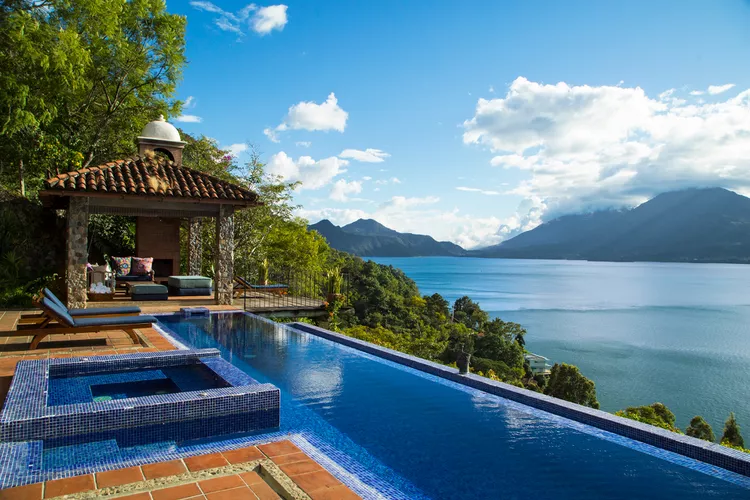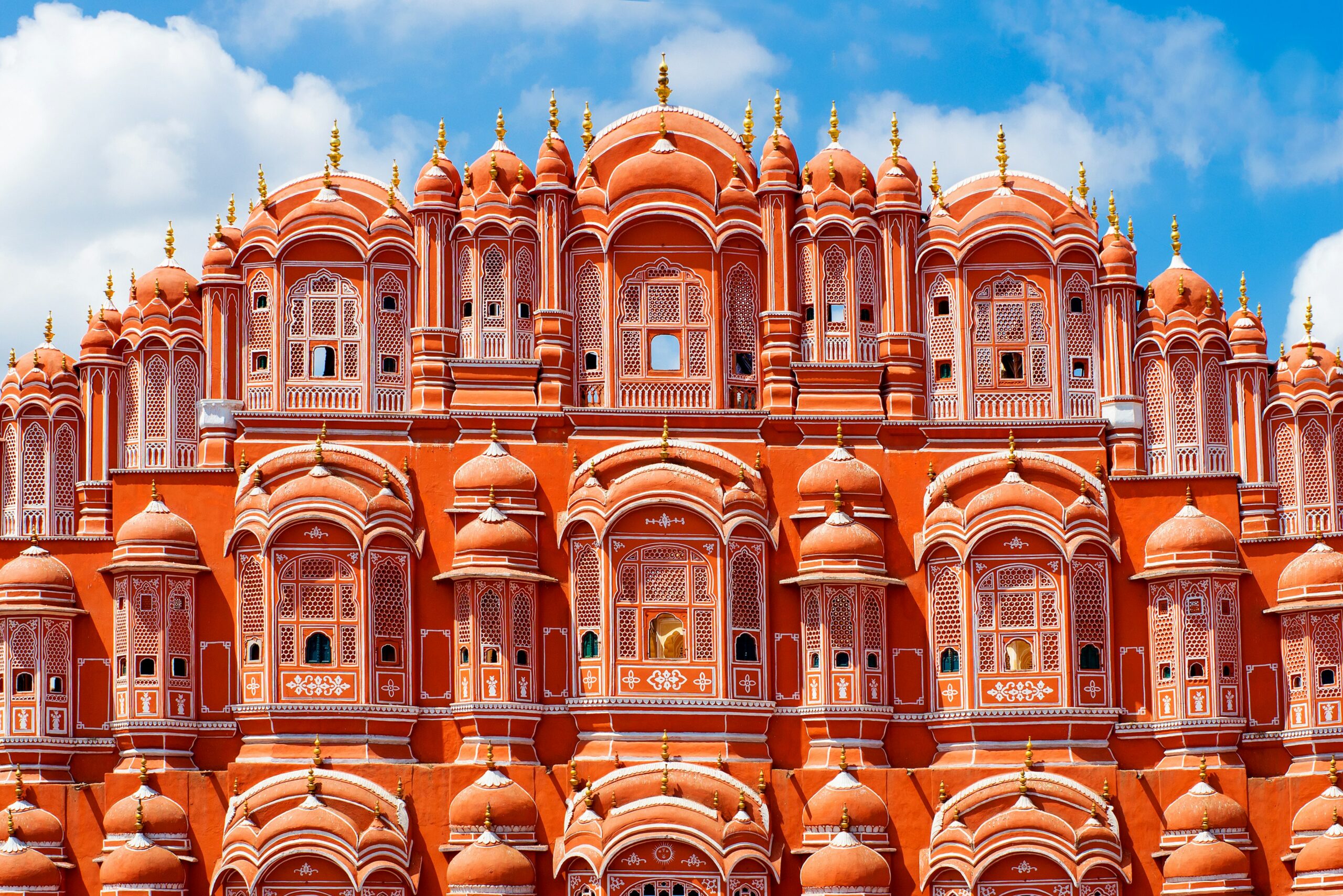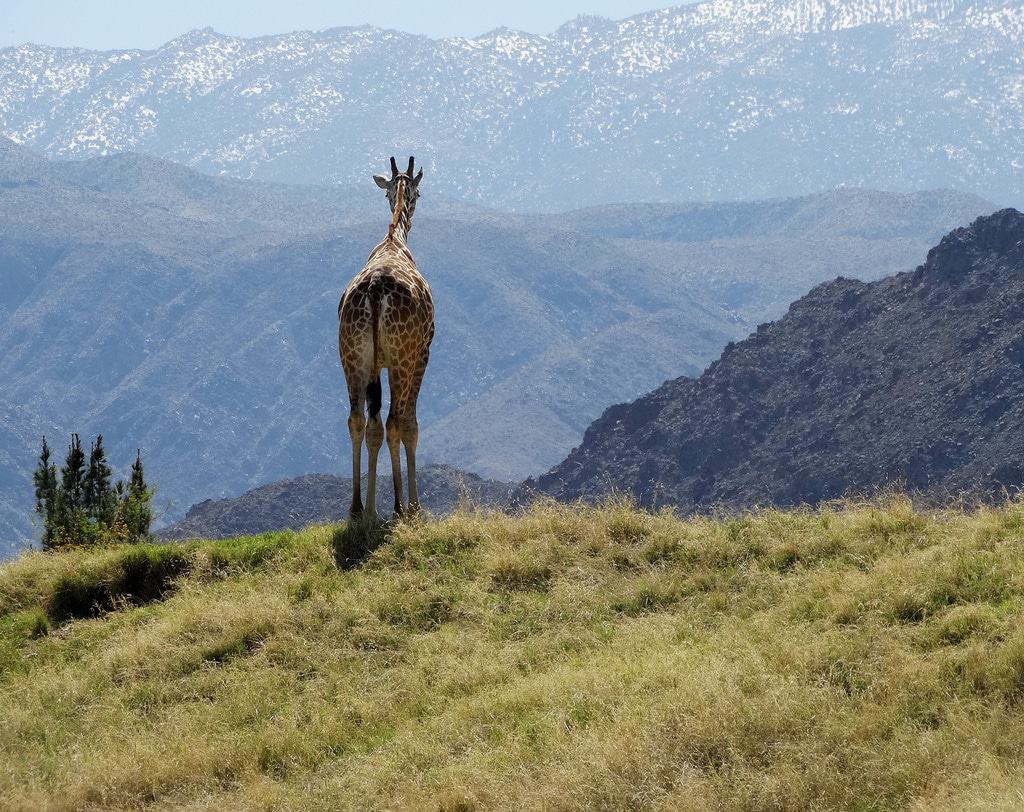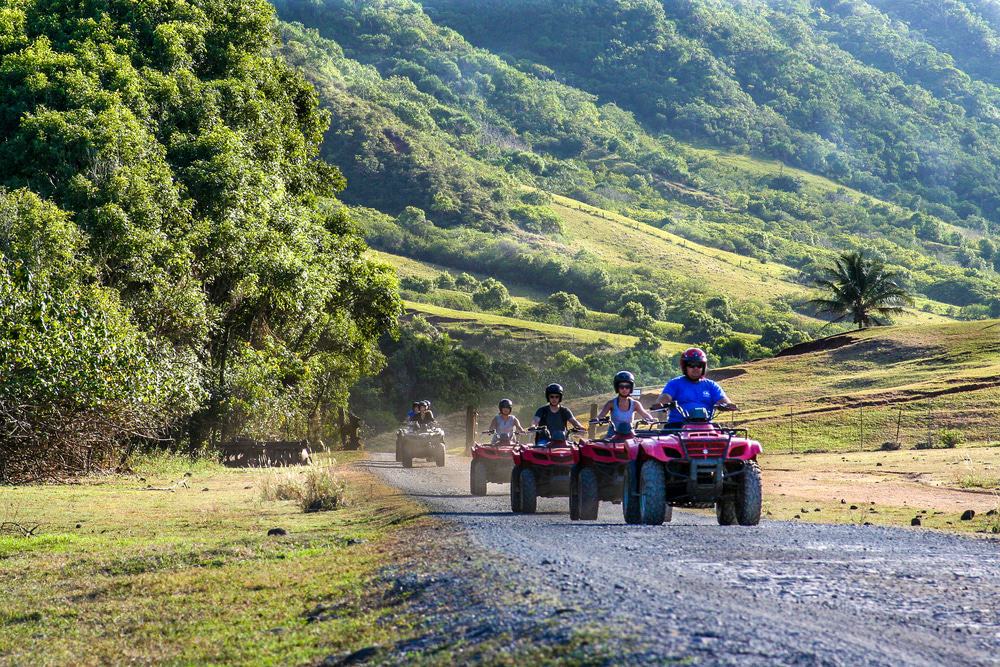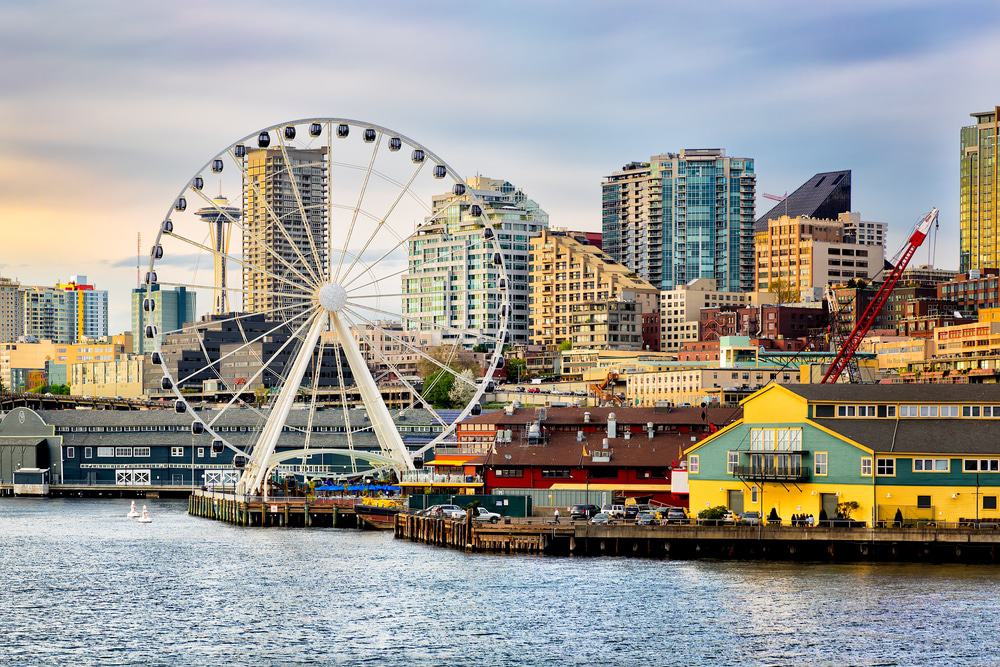Exploring the Wonders of Antigua, Guatemala
Adventurers flock to Antigua, Guatemala, for its proximity to lakes and volcanoes, but the historic capital’s boutiques, luxury hotels, and new restaurants are just as appealing.
There comes a moment on any long hike when you begin to wonder why you ever thought said hike was a good idea. On a two-day trek to the summit of Acatenango, the third-highest volcano in Guatemala, this point arrived at a particularly humbling juncture: the instant my girlfriend, Erin, and I arrived at the trailhead.
It was a temperate morning in March, the dry season. Standing on a hillside studded with the vivid purple blooms of jacaranda trees, we craned our necks to take in the 13,045-foot Acatenango. The ascent up its conical face promised to be an immersion into Guatemala’s natural order, taking us through an array of ecosystems, from farmland to cloud and alpine forests to the volcanic crater.
However, like the many visitors who make the climb, Erin and I were drawn to the excursion primarily for the experience on offer near the top: camping on a bluff overlooking a neighboring volcano, Fuego, known to regularly paint the night sky with streaks of lava.

We expected the climb to be strenuous; however, it was just the kind of endurance challenge Erin and I love to seek out while traveling. Even so, years of hiking had not prepared either of us for this trail, which rose steeply, disappearing into the clouds without any turns to temper the incline. With each step forward, our feet sank into loose scree, sliding backward a few inches at a time—more like running in place in quicksand. Within minutes, I was panting. Within an hour, the question of why we thought this was a good idea had given way to a more troubling one: Were we actually going to make it?
Guatemala captivates visitors with a passion for adventure, from backpackers drawn to its otherworldly landscapes to antiquity enthusiasts attracted to its Mayan ruins. This location triggers a thirst for the primordial—40 volcanoes beckon the adventurous traveler. In our trip context, hiking Acatenango was a rugged capstone to an enlightening week spent between Lake Atitlán to the west and Antigua to the east, both offering insights into Guatemala’s complex culture and inviting spirit.
The drive from Guatemala City to Lake Atitlán had reminded me of my earlier visit. The country envelops you instantly, blurring boundaries between past and present, making you feel suddenly very far away. With nearly half of its 18 million inhabitants identifying as Indigenous, rich customs interweave with Roman Catholicism, creating a vibrant cultural backdrop.

As congested streets gave way to lush rural vistas, we navigated curving highways lined with pickups and sputtering motorbikes, women in traditional Mayan clothing riding sidesaddle on the back. After hair-raising switchbacks, we arrived at the lake, where magnificent vistas led to illusions of creation itself. At Casa Palopó, a luxury hotel amidst the landscape, we were ready to rest. The following morning, we crossed the lake to San Juan La Laguna, one of many Mayan villages dotting the shoreline.
The disparities we observed were disconcerting yet not uncommon in a country where poverty is endemic. Deep inequities resulted in a brutal civil war from 1960 to 1996, fueling an exodus of Guatemalan citizens. Notably, many individuals voiced their frustration during our stay, highlighting that the nation is often misrepresented in popular perception; indeed, few recognize the richness of its culture and vast activities available, along with the inviting spirit encountered everywhere.

San Juan La Laguna buzzed with activity upon our arrival: meat simmered on makeshift grills while women in ornate huipils balanced firewood. Young men hawked homemade candies, creating a lively atmosphere. The main street, once a center for cacao beans, now hosted galleries showcasing regional art. Café San Juan appeared as a rustic coffee shop but led to a small farm that offered insights into coffee cultivation. This was a refreshing reminder that, even today, authenticity prevails beyond mere marketing concepts.
Venturing up the street, we stopped at a store specializing in medicinal plants before entering the Codeas Women’s Weaving Cooperative, where intricate textiles crafted by local Mayan women were on display. One provided an improvised tutorial on picking, dyeing cotton using natural resources: smoky brown from avocado bark, fluorescent green from rosemary leaves, and rich crimson from crushed bugs.

Soon we boarded the boat, crossing the lake for lunch in San Marcos, a hippie stronghold since the 1970s. Approaching our destination in a tuk-tuk required dodging chickens and stray dogs. Arriving at La Casa Zapote, the hotel’s rustic charm surprised us. An Italian restaurant, El Artesano, resided within an inviting courtyard adorned with rustic tables and a shaded roof. Here, we indulged in cheeses and meats cured by chef Dietrich Gantenbein, savoring every bite.

These unexpected moments provided great revelations about Guatemala’s allure. During my previous trip, I had flitted from sight to activity, yet this time I realized much of the country’s charm lies in a mystical force best appreciated by slowing down, lingering, and surrendering to the moment. After three days at Casa Palopó, each day capped by breathtaking sunsets, Erin and I felt a giddiness that would only deepen over the next few days.
Founded in the early 16th century, Antigua served as Guatemala’s capital for nearly 250 years. Although it relocated to Guatemala City in 1773 after widespread natural disasters, in 1979, UNESCO recognized Antigua as a World Heritage site. This recognition is celebrated through its stunning Baroque architecture, manicured squares, and labyrinthine markets, all creating a timeless atmosphere.

We were staying at Villa Bokéh, a stylish new property on the outskirts of town that opened in 2021. It offers a world of refinement, featuring whitewashed grandeur overlooking a tranquil pond. Villa Bokéh was meticulously converted from a family home into a hotel by Grupo Alta, the hotel management company operating Casa Palopó since 2010. Each of its 15 unique rooms showcases the country’s rich heritage.

Once settled in our airy suite on the upper floor, I met Grupo Alta’s president Claudia Bosch. Sipping an aperitif, the hotelier expressed that her properties represent a shift in how Guatemala is perceived. “Tell someone you’re going to Mexico or Costa Rica, and they’ll share recommendations. However, tell someone you’re going to Guatemala, and the first response is to be safe,” she lamented, conveying the common misunderstandings surrounding her homeland.
This sentiment encapsulates Antigua, a city rooted in tradition yet brimming with contemporary vibrancy. That evening, Erin and I wandered through streets lined with majestic buildings before dining at Quiltro.

Chef Rodrigo Salvo, who came by our table at the start of the meal, spoke passionately about his restaurant, an extension of his love affair with Guatemala. Originals from Chile, he settled in Antigua after traveling and training at high-end establishments like Noma in Copenhagen. His appreciation for Guatemala stemmed from its artisanal process unique to local life.
The meal was a 12-course feast, showcasing striking small plates. Erin, initially wary of modern gastronomy, found herself moved by the authenticity. “It sounds crazy,” she said, “but it feels like you can actually taste how much this means to him.”
Exploring Guatemala’s Allure
Such food experiences are no longer exceptions in Antigua, where young chefs are carving out distinct niches from backpacker cafés and stuffy white-tablecloth establishments that once dominated. The following day, after visiting boutiques like Que Onda Vos, we stopped for lunch at Nana, where mid-century décor merged effortlessly with a hip atmosphere. Each dish was innovative, elevating flavors with fresh ingredients.
Rodrigo Aguilar, Nana’s chef and owner, reflected on how his concept evolved post-pandemic. “We had time to reflect on where we wanted to go,” he noted, inviting guests into his culinary vision, a departure from standard hospitality practices.

During the conversation, I noticed a tattoo on Aguilar’s forearm depicting the landscape of Tajumulco, the tallest volcano in Guatemala. With reminders of our impending hike looming nearby, I asked Aguilar for advice.
“Oh, man, there’s nothing like it. However, let me tell you: it is going to be very, very hard!” he advised.
At the exact moment during our hike when exhaustion set in, the landscape transformed dramatically, as it often does in Guatemala. We moved from a punishing trail into a cloud forest draped with ferns and moss-covered trees. While the incline remained fierce, the firm footing changed the experience.
“That first section is the killer,” our guide, Mario Ramirez, shared as we gazed toward the Pacific coastline. “The rest will be maybe not easy, but possible.”
Ramirez radiated positive energy while guiding us through routes that maximized our experience, helping us feel an enchanting sense of having the volcano to ourselves.

After five arduous hours uphill, we arrived at our campsite, where the mist-shrouded woods opened up into towering pines. “And now, the show begins,” Ramirez said.
The thin air carried a chill as clouds swirled around us, and soon, the sun began to set, revealing Fuego’s majestic silhouette framed against a vibrant backdrop. While Ramirez prepared a meal, Erin and I marveled as Fuego erupted every 15 minutes, creating bursts of lava that illuminated the night.
With dawn approaching, our hike to the summit awaited, posing a formidable challenge. Yet, in that moment, mesmerized by the volcano’s wild beauty framed by twinkling stars, we felt an intoxicating connection to Guatemala’s enchanting landscapes.
The Charms of Antigua Guatemala
Where to Stay
Casa Palopó: This luxurious property’s hillside location offers breathtaking views of Lake Atitlán and organizes experiences such as outings to lakeside villages and sessions with local shamans.
Villa Bokéh: A mansion at the edge of Antigua’s old town, it features 15 character-filled rooms along with an excellent restaurant and beautiful grounds.
Where to Eat
El Artesano: Guatemalan-Swiss chef Dietrich Gantenbein curates all of the meats at his Italian restaurant located inside La Casa Zapote, just outside the San Marcos hippie enclave.
Nana: With a vintage clothing shop, Nana has brought a casually hip ambiance to Antigua’s dining scene.
Quiltro: Chef Rodrigo Salvo’s culinary training merges with his passion for Guatemalan culture at his restaurant, which opened in 2021.
Ulew: This unique bar inside a brewery can be found via a secret door built into an old phone booth, where bartenders craft exquisite cocktails using local herbs and liquors.
Where to Shop
Codeas Women’s Weaving Cooperative: Textiles made and sold by members of the Mayan community. Calle Chi Nima Ya, San Juan La Laguna.
Mercado de Artesanías: Wonderfully cluttered and chaotic, this spot is perfect for wandering through stalls and bargaining for blankets, wooden spoons, and handicrafts. 4a Calle Poniente, Antigua Guatemala.
Que Onda Vos: Locally made rugs, glassware, and art are showcased in an airy, whitewashed space.
Experience the true essence of Guatemala, embracing its rich culture, breathtaking landscapes, and culinary diversity. This journey promises enchantment around every corner, urging travelers to uncover the treasures of Antigua Guatemala.
